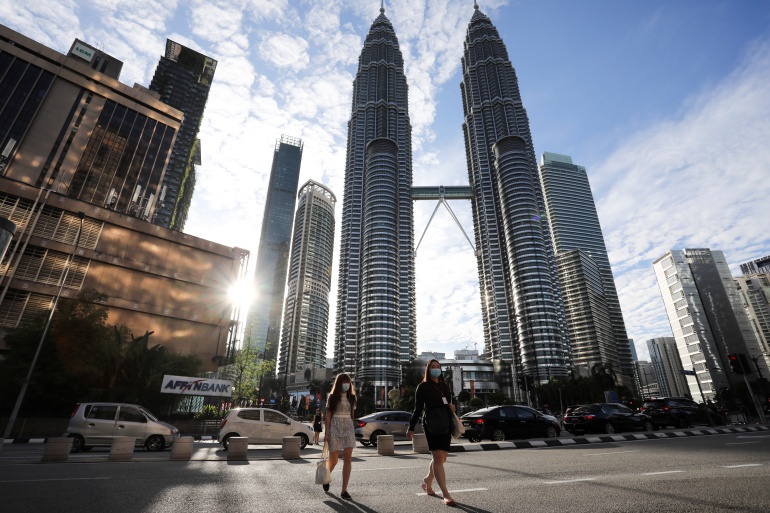Over a 13 year-period from 2007 to 2019, an average of 25 million foreign tourists visited Malaysia annually.
If visitors that did not stay overnight were to be added, the number would be even higher. In 2019, we had 26,100,784 tourists and 8,944,841 excursionists on short trips.
Other than trains, buses, taxis and e-hailing vehicles, tour buses and vans were also used to transfer tourists from airports to hotels.
For sightseeing tours in and around town and on overland trips to various cities and resorts, tour buses offered convenience, comfort and view.
Many tour companies operate a fleet of tour buses and vans. They hire from others when more are needed for airport transfers, sightseeing tours or overland trips.
Tour vehicles are chartered mainly by tour operators, corporate customers, government agencies and various organisations.
Utilisation of tour vehicles were high until COVID-19 struck. The movement control order (MCO) had to be introduced in March 2020 and leisure travel in and out of the country came to a halt. Foreign tourists dropped to 4.33 million in 2020 and bottomed to 134,728 in 2021.
With the opening of international borders, the Ministry of Tourism, Arts and Culture (MOTAC) has targeted two million tourists to arrive from April to December this year.
Its minister Datuk Seri Nancy Shukri told this to reporters at the Kuala Lumpur International Airport on April 1.
It would be no surprise if the figure reaches three million, as large numbers are expected to enter Malaysia through land border crossings with southern Thailand, Singapore and Brunei.
Combined, these three countries contributed a total of 13.3 million tourists to Malaysia in 2019.
Almost all tourists from these three countries entering by road would be travelling in their own transport or public buses, taxis or e-hailing vehicles, but not our tour buses.
Therefore, demand for tour vehicles by foreign tourists will only pick up next year and begin to normalise in 2024.

Meanwhile, tour buses have been left idling by the roadside. Those repossessed and kept in storage yards were exposed to torrential rain and left rusting under the hot sun.
Demand for tour vehicles from domestic tourism had always been minimal, not just during the pandemic.
Even when survival was under threat, tour bus operators remained clueless on how to create services for the domestic market.
In the past, there were occasional charters for outstation trips or bus tours to southern Thailand or Singapore, the most popular were for 3 days and 2 nights.
Other than that, domestic tour packages were mostly for free independent travellers (FITs) that do not require the use of tour buses.
Clearly, the domestic market alone would not be able to offer enough business to sustain the 4,725 travel and tour firms currently registered with MOTAC.
Had tour bus operators been more innovative and daring, they would have been busy running their tour buses catering to residents, especially after interstate travel restrictions were lifted. Instead of relying on traditional services, they could have created new products for the locals.
Now, it is also an opportune time to launch new services for foreign FITs to join bus tours for sightseeing around cities and also overland tours, especially around peninsular Malaysia.
The absence of daily departures in most cities showed that tourism is still at its infancy in Malaysia.
I have many business ideas to share but telling them to tour bus operators would be like pouring water on a duck’s back, as the proposals would sound all too familiar, impossible, or involve too much hard work.
Chartering out a tour bus is much easier, as all that is needed is just wait.
The best recourse is to get at least 20 tour bus operators to participate in a tourism lab together with officers from MOTAC, Tourism Malaysia, local authority and reporters to brainstorm a wide variety of views and explore all ideas, including those previously thought to be not feasible.
The objective is to spur utilisation of tour buses this year and beyond. The aim is to get large number of tour buses running all over the country by introducing innovative tours nationwide in addition to sightseeing tours in many cities and overland trips with overnight accommodation.
The tourism lab could be conducted effectively by leading participants to discover on their own the many concepts I have in mind so that they take ownership of these ideas.
They will then be tasked to make them work by assuming all challenges identified could be overcome later.
If there were 30 participants, they could be divided into six groups with each using a slideshow to present different proposals for others to comment and criticise.
I would not be surprised if the most vehement critics would later adopt the very same proposals after finetuning them.
All too often, good or radical ideas are immediately shot down by those with a closed mind without first exploring on how they could possibly work.
They are quick to stereotype and believe that existing practices or rules cannot be changed and doggedly stick to the status quo.
Lacking in imagination, bankrupt of ideas and spoiled by rich pickings during the good times, innovation had never been on the radar of tour bus operators.
A tourism lab organised by MOTAC or a travel association is crucial to get tour buses running on new tours for tourism to flourish. – April 28, 2022
YS Chan is Asean Tourism Master Trainer for travel agencies, master trainer for Mesra Malaysia and Travel & Tours Enhancement Course. He is also a tourism and transport industry consultant and writer.
The views expressed are solely of the author and do not necessarily reflect those of Focus Malaysia.










